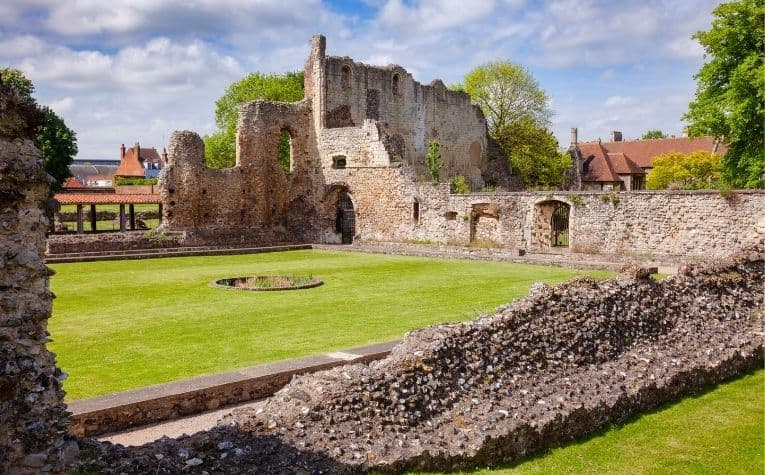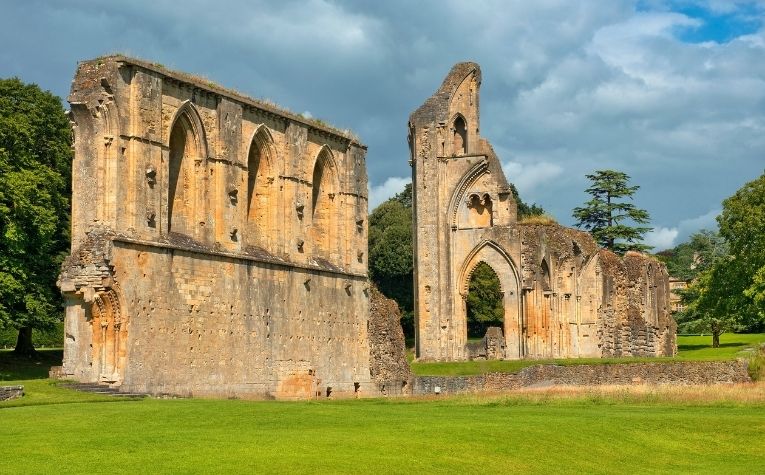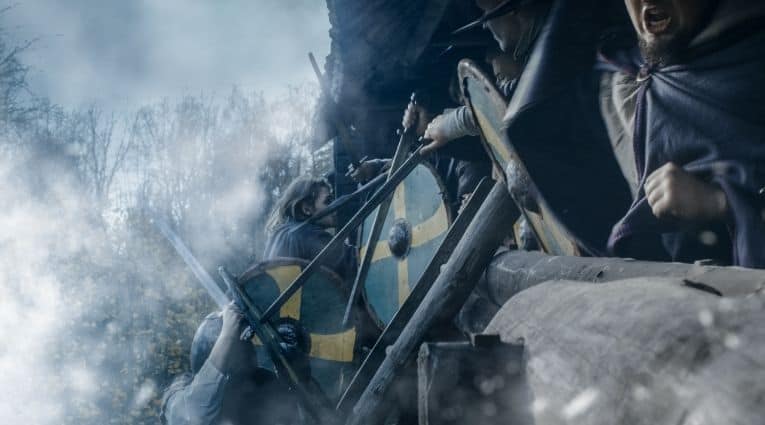Many of the earliest recording Viking raids targeted British monasteries.
Some historians argue that it was revenge against the invasion of Christianity into Scandinavia that motivated these attacks, but others contend that their lush farmlands were the actual targets. What was it that drove the Vikings to attack monasteries?
Monasteries were nearly effortless targets for the Vikings.
They were far away from towns, never housed soldiers, and brimming with valuable commodities made of gold, silver, and precious materials.
Contemporary English sources recorded the attacks as they happened and reported on them soon afterward.
Historians believe that many of the stories are exaggerations, but they still contain certain undeniable truths about the raids. Keep reading to learn more.
A lot of people are interested in the role of Viking women. See Did Female Vikings Go On Raids? to learn more.

The Dawn of the Viking Age
793 AD is when the first Viking attack was recorded. The monastery located on the island of Lindisfarne in England was the target.
Numerous English monks were slaughtered as the Vikings raided and destroyed the monastery.
For the Christian people of England, sacking a house of God by pagans was considered a serious offense, even worse than if they had simply originated from a rival country.
Vikings often attacked monasteries because they were valuable, unguarded targets that would yield lots of wealth for each raid.
Christians were so caught off guard at the idea that people would attack holy sites that they were utterly unprepared for the incursions.
At the time, Western Europe trembled where it stood at the idea that raiders would target monasteries instead of port towns and villages.
From the Vikings’ point of view, the monasteries were places left relatively undefended, attended mainly by pacifistic monks without any fighting training to speak of.
Monasteries made easy marks for the raiders.
Raids and invasions continued all along Western Europe’s coasts and up their rivers for the next three hundred years.
Vikings eventually gained more power and notoriety, allowing them to send larger armies to conquer large settlements and overcome many European countries’ might.
In Ireland, Vikings raided settlements for their gold and silver and their women.
Vikings commonly either kidnapped or bought local women from the settlements they invaded, according to contemporaneous sources in Dublin and Linn Duachaill.
The Vikings were strong and smart fighters. See Why are Vikings associated with axes? to learn more.

The wealth of monasteries
At the time, monasteries tended to accumulate an abundance of material wealth and store it in vaults or shrines if it was not on display in the areas of worship.
All of that silver and gold was too much of a temptation to pass up. Vikings were not Christians, so they saw no reason to treat these buildings as the sacred places that the English regarded them as.
The pagan culture of Vikings meant that they were willing to steal ancient relics since they were often made of precious metals that could be melted down or sold as they were.
The pagan society and willingness to plunder churches meant Western Europe highly disparaged Vikings for centuries after the raids’ end.
Monks and other religious men were the leading recorders of history in that period, so their opinions were the ones that everyone remembered.
Obviously, their descriptions of Vikings were colored by the fear and outrage from the fearsome raids.
Vikings didn’t keep their chronicles, so there are few firsthand accounts from their point of view.
Archaeological evidence has to provide the voice for their people and their fishing, agricultural, and trading practices in everyday life.
Did the Vikings wear defensive attire? See Did the Vikings Wear Chainmail? to learn more.
The Nature of Raiding
Initially, Viking raids were exploratory and stealthy, made up of small crews of fighters looking for something quick and easy.
It wasn’t until later, when they had gotten the lay of the land, that they began sending massive armies on their widely renowned boats with imposing figureheads and sounding their deafening horns.
During the early to mid-800s, Vikings continued to send small raiding parties to attack monasteries. During 840, they deviated from their typical summer raiding patterns and executed an extensively planned raid during the winter, a difficult time to sail. (Also see Did the Vikings Ever Fight Samurai?)
In order to ensure the success of the winter raid, the Vikings made landfall on a small island off the coast of Ireland and waited until the winter months to make their way to England.
They wanted to keep the element of surprise as the English began to prepare for their landings.
Ten years later, in 850, a group of Vikings spent their first winter in England, in Kent, and they established a wintertime encampment.
They would return to this encampment several times throughout the decade, waiting for the right time to strike the unwitting English towns.
Treasure Galore
When the Vikings plundered churches, they sometimes stored their hoards in places that they couldn’t return and claim.
Subsequently, some of these pieces of treasure have ended up in famous museums around the world.
Frankish silver cups, known as pyxes, were used in churches to contain the communion wafers while the sacrament was administered.
Some Viking treasures had runic inscriptions written in Anglo-Saxon runes.
These inscriptions may be the Vikings’ names who owned the treasures and buried them in the places they were later found by archaeologists centuries after the Viking Age.
Galloway Hoard
Discovered in 2014 in Scotland by a metal detector hobbyist, the Galloway Hoard attracted archaeologists’ notice far and wide.
More than 100 objects made of gold, silver, and rare gemstones were found in the hoard and dated to within the Viking Age.
The Galloway Hoard seems to originate from the mid-900s to the early 1000s AD. It was valued at around two million pounds sterling.
It featured artifacts, including a silver cross, silver ingots, brooches, decorated arm rings with Saltire designs, and the largest Carolingian pot ever found.
These objects originated from places all over Western Europe.
The hoard included glass, enamel, textiles, and gold and silver.
The Carolingian pot was likely over 100 years old when the reserve was amassed and featured old treasure pieces inside the sealed pot.
In the pot, archaeologists found disc brooches, Byzantine silk from modern-day Istanbul, crystals wrapped in cloth, and an Irish silver brooch, which may have been an heirloom of a victim of the raiding.
The End of An Era
Over the next century, Vikings learned that the British countries were in severe turmoil and couldn’t stand up to their well-trained soldiers.
They began to ramp up their invasions and emigration. They established a colony in modern-day York and Dublin.
The Vikings who settled in these areas became farmers and craftsmen, leaving their raiding roots far behind them.
Some women from Scandinavia began to accompany these missions to help with settling and keeping track of the finances, as was the tradition.
These raids continued to increase in size and scale until the Vikings fought to take over the entire English country.
In 1013, the Danish king’s invasions culminated in his acquiring the English crown.
In 1035, Cnut the Great died as the kind of Norway, Sweden, England, and Denmark.
1066 sounded the death knell for Viking ownership of England and their raids.
Their king was defeated at the Battle of Stamford Bridge, and the Normans quickly took control of England a few weeks later when they triumphed at the Battle of Hastings.
Conclusion
Viking raids focused their energies in the early days on monasteries because they were often left undefended and rich in material wealth that was ripe for the taking.
Vikings were looking for vulnerable places that were far away from soldiers and trained fighters; monasteries fulfilled those desires.
References:
[1] www.britannica.com
[2] Wikipedia

